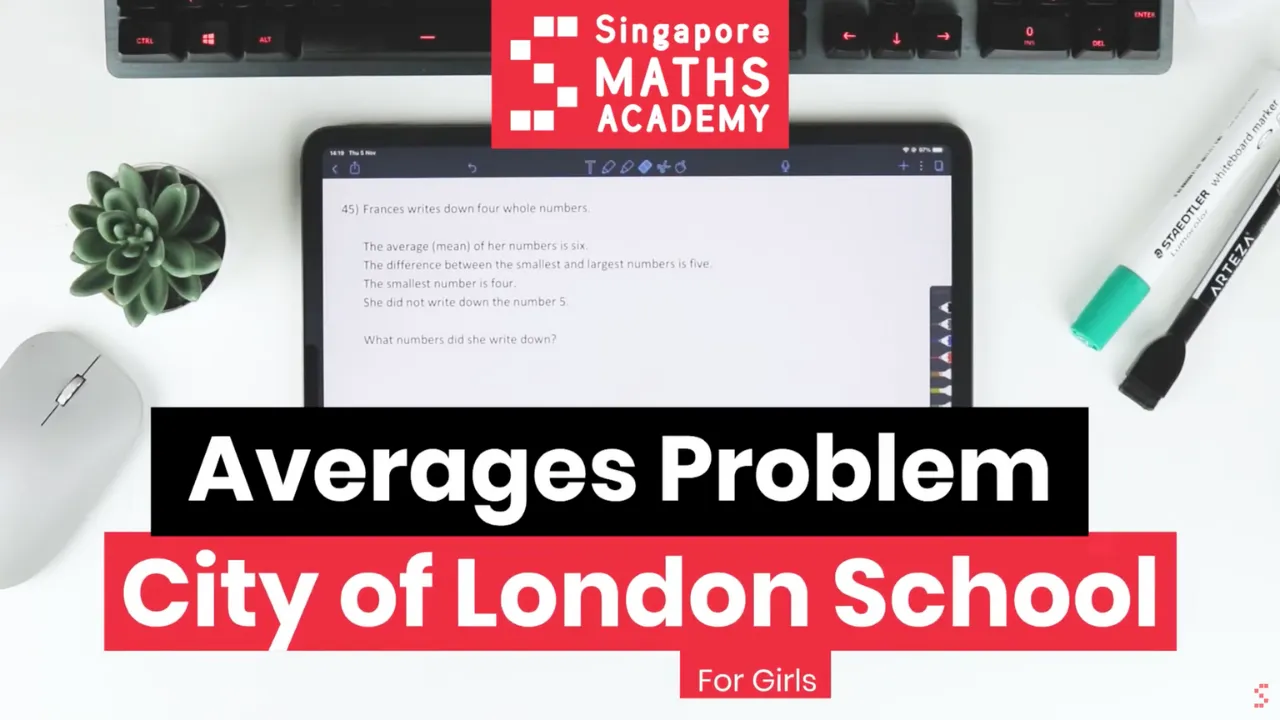Welcome back! Today, we are delving into another intriguing math question from the City of London School for Girls. Let’s break down Question 45 step-by-step. This exercise will challenge our understanding of averages, sums, and ranges.
Understanding the Problem
Francis has written down four whole numbers, and we are given some key pieces of information:
- The average (mean) of these numbers is 6.
- The difference between the smallest and the largest number is 5.
- The smallest number is 4.
- Francis did not write the numbers 2 or 5.
Our task is to figure out what numbers Francis wrote down based on these clues.
Breaking Down the Clues
First, let’s unpack what we know:
Average and Sum

If the average of the four numbers is 6, we can use this information to find their total sum. The formula for the average (mean) is:
[ \text{Average} = \frac{\text{Sum of Numbers}}{\text{Total Numbers}} ]
Given the average is 6 and there are four numbers, we can rearrange this formula to find the sum:
[ 6 = \frac{\text{Sum}}{4} ]
So, multiplying both sides by 4:
[ \text{Sum} = 6 \times 4 = 24 ]
This tells us that the sum of the four numbers must be 24.
Range of Numbers
Next, the difference between the smallest and largest number is 5. This means:
[ \text{Largest Number} – \text{Smallest Number} = 5 ]
We are also told that the smallest number is 4. Therefore, the largest number must be:
[ 4 + 5 = 9 ]
Now, we have identified two of the four numbers: 4 and 9.
Remaining Numbers
So far, the numbers we have add up to:
[ 4 + 9 = 13 ]
Since the total sum must be 24, the sum of the remaining two numbers must be:
[ 24 – 13 = 11 ]
Let’s denote the two unknown numbers as ( x ) and ( y ). Therefore, we need:
[ x + y = 11 ]
Additionally, we know that Francis did not write down the numbers 2 or 5. Therefore, neither ( x ) nor ( y ) can be 5.
Finding the Solution
Let’s explore the possible combinations of ( x ) and ( y ) that add up to 11, excluding the number 5:
Step-by-Step Reasoning
- If the smallest number is 4, and recalling that Francis did not write 2, ( x ) and ( y ) must be greater than 4.
- Check pairs
Upon careful review, we see that pairs (4, 7) and (7, 4) both make sense and do not violate any of the given conditions. The identified numbers are:[ 4, 4, 7, 9 ]
Summary
Through systematic analysis and careful consideration of the given restraints, Francis wrote down the numbers 4, 4, 7, and 9.
“Whenever they give you the mean, it typically signifies that one should think about the sum of those numbers. In this case, the sum of four numbers being 24 allowed us to deduce other parts of the question and arrive at the final answer.”

Conclusion
This exercise demonstrates the importance of careful reasoning and systematic problem-solving in mathematics. By breaking down complex problems into manageable parts, we can uncover the solution step-by-step. Thank you for following this detailed breakdown. If you found this explanation helpful, please let us know in the comments, and don’t forget to like and subscribe to our channel for more insightful videos.

